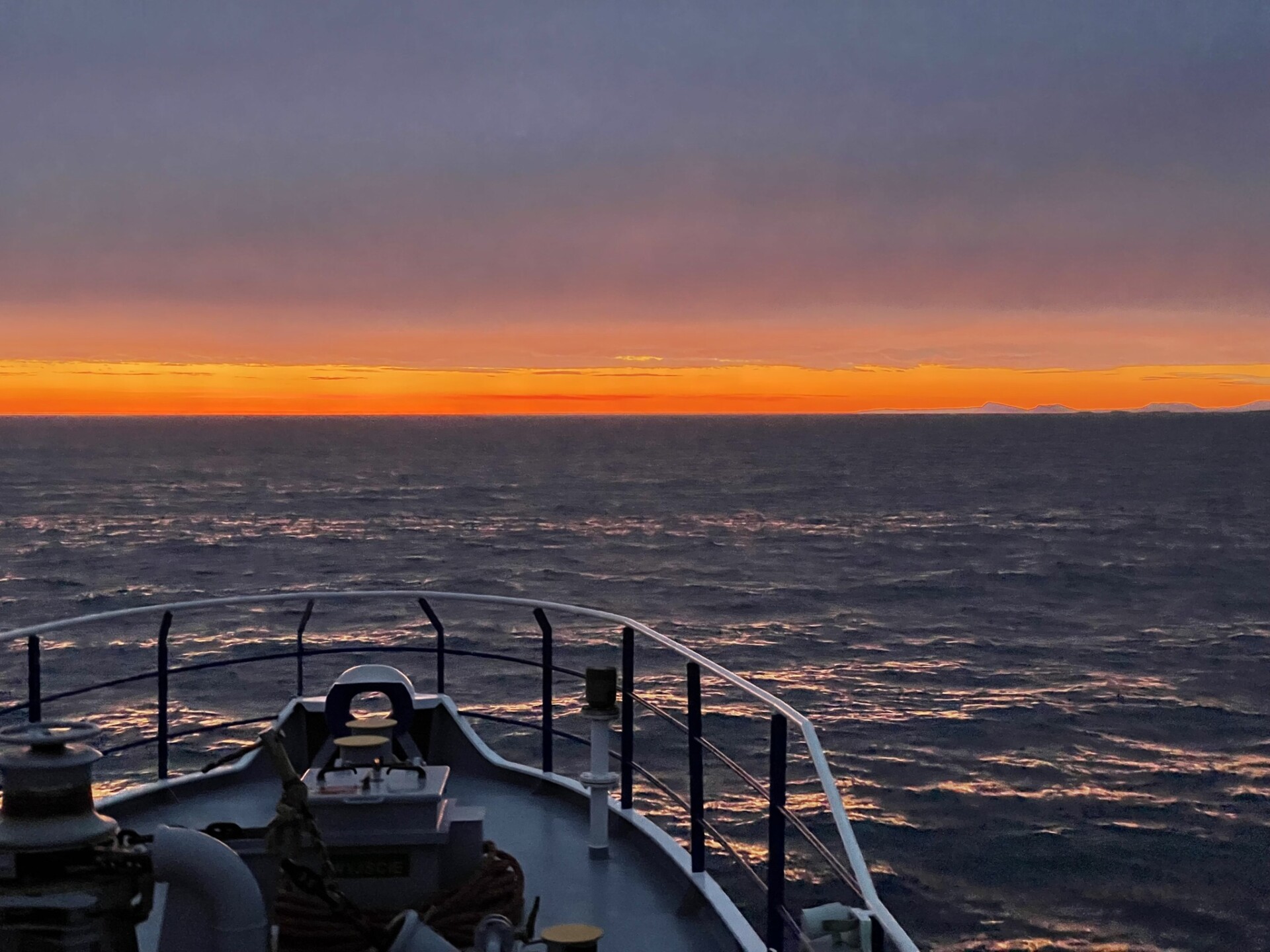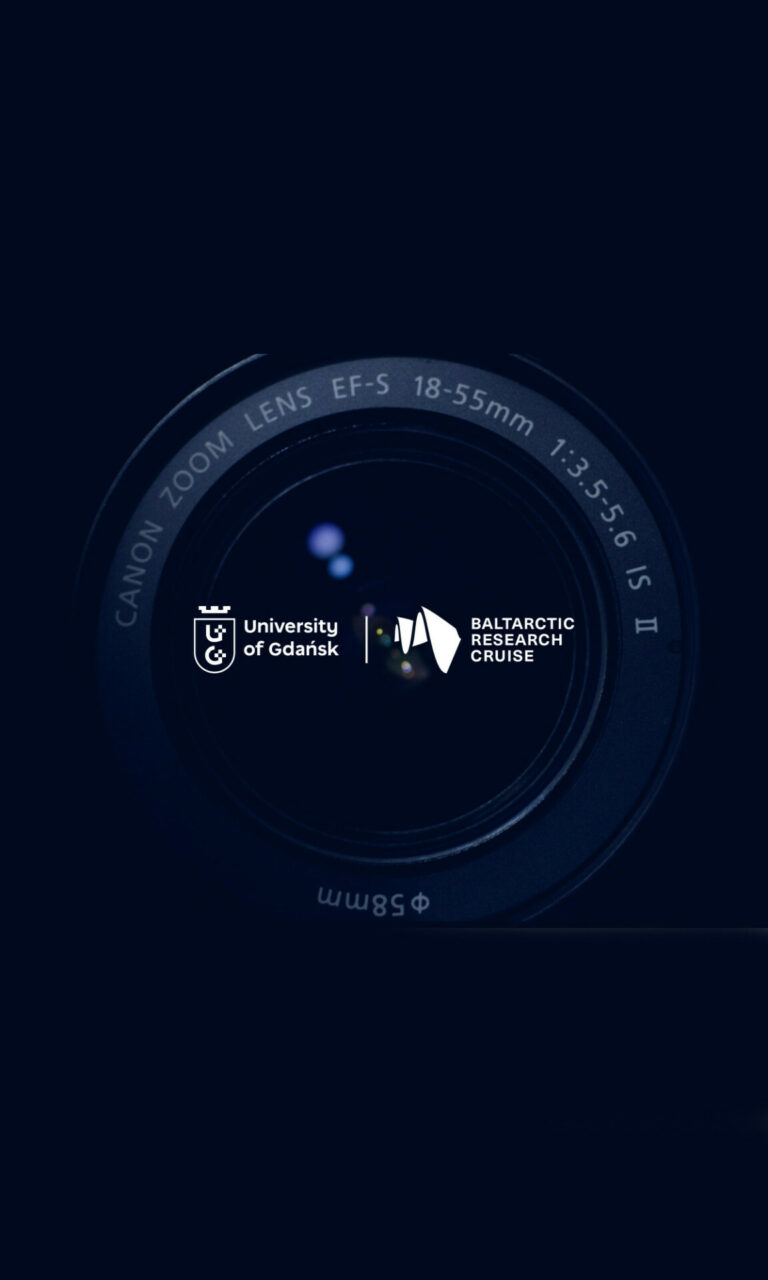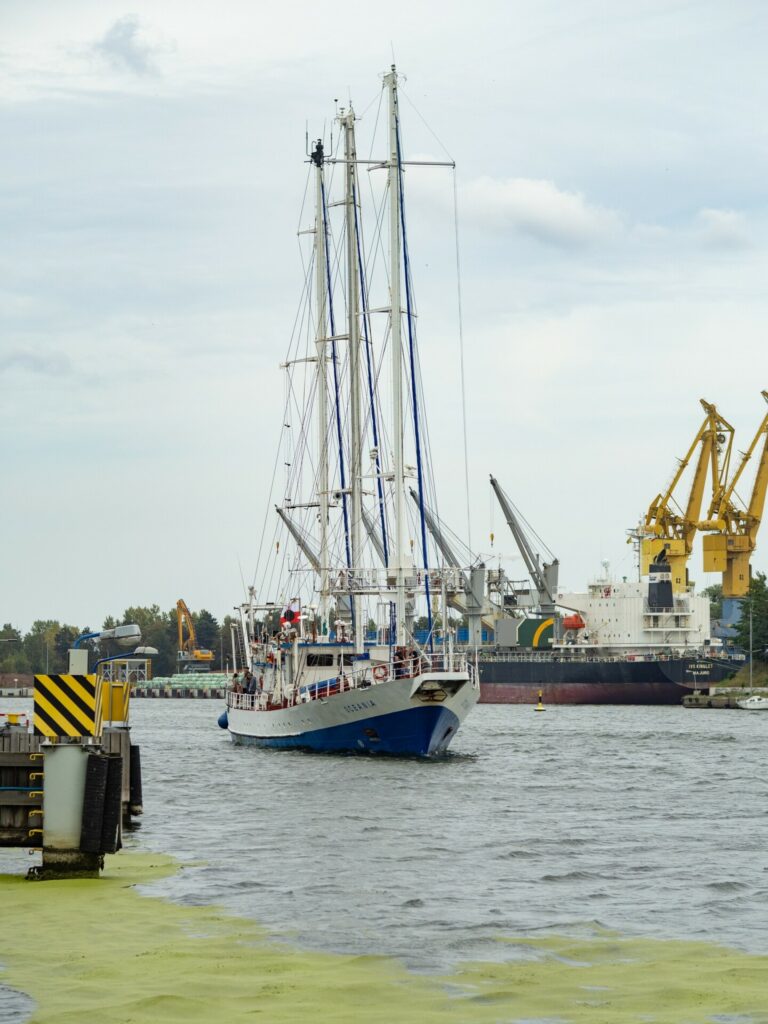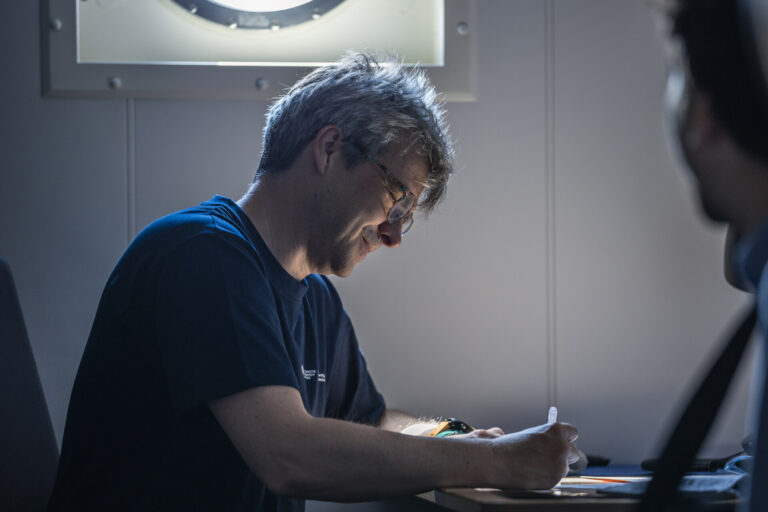Saturday, the thirteenth day of the cruise. We left Bergen last night to enter one of the most beautiful phenomena I’ve ever seen in my life. You know that moment when the sun sets over the sea, the sky burns intensely with the colors of fire for a moment, then the colors fade, night falls and the beach becomes empty. Here, just below the Arctic Circle, the sun sets, the sky lights up – and stays that way. Half the sky glows orange and red for several hours before the sun reappears above the horizon.
You say: it may be nice, but what’s the point if you can’t eat a waffle with whipped cream behind the sand dunes like in Poland.
Well, you can. But one step at a time. We arrived at a berth in the center of Bergen, Norway’s second largest city, and ran out into town, eager for what we miss most at sea – walking. The kind of ordinary roaming that we don’t appreciate until we’ve spent a few days on a ship fifty meters long.
Then we roam. Around the city that is pleasant, but not stunningly beautiful. Lots of port and offshore industry, a sweet old town consisting of a few narrow streets between wooden townhouses. A market hall catering to the tourist with a fabulous array of fish and shellfish, including some mutant combination of a giant crab and a spider. Prices there seemed unbelievable, so we chose the food trucks, looking for the famous Norwegian waffle. A waffle in a shape of several hearts, traditionally baked in a cast iron mold.
Then suddenly! Between the stalls with salmon sandwiches and fish and chips fryers stands a waffle stall, but hardly something exotic, it looks exactly like the Polish national waffle. It quickly turned out that the stall is run by Poles, waffles are bought by Poles, in general, you can hear Polish everywhere here, we are the second national group in Norway after the Norwegians themselves.
And small differences. In Poland, I consider waffle with whipped cream and fruit to be a classic. Here, almost everyone ordered the “Luxe” waffle with chocolate and bananas.
In Bergen, as in all of Norway, what impresses is not what people built there, but WHERE they built it. The view from one of the surrounding hills of the city, located on a forested fjord, separated from the open sea by strands of islands and islets, is arguably one of the most beautiful cityscapes in Europe.
We caught up with Oceania, a seasoned research vessel of the Institute of Oceaology of the Polish Academy of Sciences. An awe-inspiring vessel, from a distance looking like a majestic sailing ship, with a slender hull and three masts. The sails were always intended to be an auxiliary propulsion system, and at one time apparently – after the launch in the mid-1980s – they were even used, but there was more fuss about it than there was actually benefit, so the yards were dismantled and the masts were left to hold all the gear for researching the seas and oceans.
The silhouette was left, rather unfortunately, because it makes the interior of the ship somewhat claustrophobic, and there’s not much room on the deck to work, either, but the style of the sailing ship, combined with the far-flung voyages that Oceania has made over the years, makes one enter into the atmosphere of great Arctic adventure, science in an adventurous and rock-and-roll edition.
Continuing on to Bodø we sail in parallel, Oceania conducting the same research as Oceanograf, only more on the open sea side, along the border of the continental shelf, also looking for signs of the Baltic in northern waters. The Oceanograf then returns to the safety of the Gulf of Gdansk, and the Oceania disappears over the horizon, sailing toward the Arctic.
Today is the start of the European Football Championship, which fortunately in my bunch of merry nerds nobody is interested in. They prefer to play board games. I am touched. Finally, after years – decades even! – of searching, I found someone who understands me. And since the company is international, well, I guess we’ll do some sort of championship.
R/v Oceanograf
BaltArctic Research Cruise, Day 13
June 15, 2024
Kolory pożaru
Niebo na północy • Potrzeba chodzenia • Polski gofr kolonizuje Norwegię • Nerd i poszukiwacz przygód płyną na randkę • Mistrzostwa Europy w planszówki
Sobota, trzynasty dzień rejsu, wczoraj wieczorem opuściliśmy Bergen, aby wpłynąć w jedno z najpiękniejszych zjawisk, jakie w życiu widziałem. Kojarzycie ten moment, kiedy słońce zachodzi nad morzem, niebo na chwilę płonie intensywnie barwami pożaru, potem kolory blakną, zapada noc, a plaża pustoszeje. Tutaj, tuż pod kołem polarnym, słońce zachodzi, niebo rozpala się – i tak zostaje. Pół nieba żarzy się kilka godzin na pomarańczowo i czerwono, zanim słońce na powrót pojawi się nad horyzontem.
Mówicie: może i ładnie, ale jaki to ma sens, jeśli nie można zjeść za wydmami gofra z bitą śmietaną.
Otóż można. Ale po kolei. Przybiliśmy do kei w centrum Bergen, drugiego największego miasta Norwegii i wybiegliśmy na miasto, żądni tego, czego na morzu najbardziej brakuje – czyli chodzenia. Takiego zwykłego łażenia, którego nie doceniamy dopóki nie spędzimy kilku dni na statku długości pięćdziesięciu metrów.
To łazimy. Po mieście przyjemnym, ale nie jakoś oszałamiająco pięknym. Dużo portowego i offshorowego przemysłu, słodka starówka, składająca się z kilku ciasnych uliczek między drewnianymi kamieniczkami (drewniczkami?). Hala targowa pod turystę z cenami jak dla ruskiego mafioza z bajeczną ofertą ryb i skorupiaków, w tym jakimś zmutowanym krabo-pająkiem wielkości stołu. Wybraliśmy food trucki, szukając słynnego norweskiego wafla. Goferka z kilku serduszek, tradycyjnie pieczonego w żeliwnej formie.
Tymczasem. Wtem. Aż tu nagle. Między straganami z kanapkami z łososiem i smażalniami z fish and chips stoi budka z goframi, ale mało to coś egzotyczne, wypisz wymaluj polski gofr narodowy, co to go robią od Świnoujścia do Krynicy Morskiej. Szybko się okazało, że budkę prowadzą Polacy, kupują Polacy, w ogóle wszędzie tu słychać polski, jesteśmy w Norwegii drugą grupą narodowościową po samych Norwegach.
Oraz małe różnice. W Polsce za klasyczny uważam gofr z bitą śmietaną i owocami. Tutaj prawie wszyscy zamawiali gofr „Luxe” z czekoladą i bananami.
W Bergen, jak w całej Norwegii, wrażenie robi nie to, co tam ludzie zbudowali, tylko GDZIE to zbudowali. Widok z jednego okolicznych wzgórz na położone nad zalesionym fiordem miasto, oddzielone od otwartego morza pasmami wysp i wysepek to zapewne jeden z najpiękniejszych miejskich pejzaży w Europie.
Dogoniła nas Oceania, zaprawiony w bojach statek badawczy Instytutu Oceaologii PAN. Przedziwna jednostka, z daleka wyglądająca jak majestatyczny żaglowiec, o smukłym kadłubie i trzech masztach. Żagle zawsze miały być napędem pomocniczym i kiedyś podobno – po zwodowaniu w połowie lat osiemdziesiątych – nawet ich używano, ale więcej z tym było zamieszania niż faktycznie korzyści, więc reje zdemontowano, a maszty zostawiono, żeby na nich trzymać cały szpej do badań mórz i oceanów.
Sylwetka została, raczej niestety, bo jest przez to wnętrze statku cokolwiek klaustrofobiczne, a miejsca na decku do pracy też nie za wiele, ale styl żaglowca w połączeniu z dalekimi wojażami, które Oceania przez lata odbyła sprawia, że wchodzi się tam w atmosferę wielkiej arktycznej przygody, nauki w wydaniu awanturniczym i rockandrollowym.
Dalej do Bodø płyniemy równolegle, Oceania prowadzi te same badania co Oceanograf, tylko bardziej od strony otwartego morza, wzdłuż granicy szelfu kontynentalnego, też szukając śladów Bałtyku na wodach północy. Oceanograf wraca potem na bezpieczną Zatokę Gdańską, a Oceania jak to Oceania – znika za horyzontem, płynąc w stronę Arktyki.
Dziś początek Mistrzostw Europy w piłce nożnej, które szczęśliwie w mojej gromadce wesołych nerdów nikogo nie interesują. Wolą grać w planszówki. Jestem wzruszony. W końcu, po latach – dekadach nawet! – poszukiwań, znalazłem kogoś, kto mnie rozumie. A ponieważ towarzystwo międzynarodowe, cóż, chyba zrobimy jakieś mistrzostwa.
R/V Oceanograf
BaltArctic Research Cruise, Dzień 13
15 czerwca 2024





